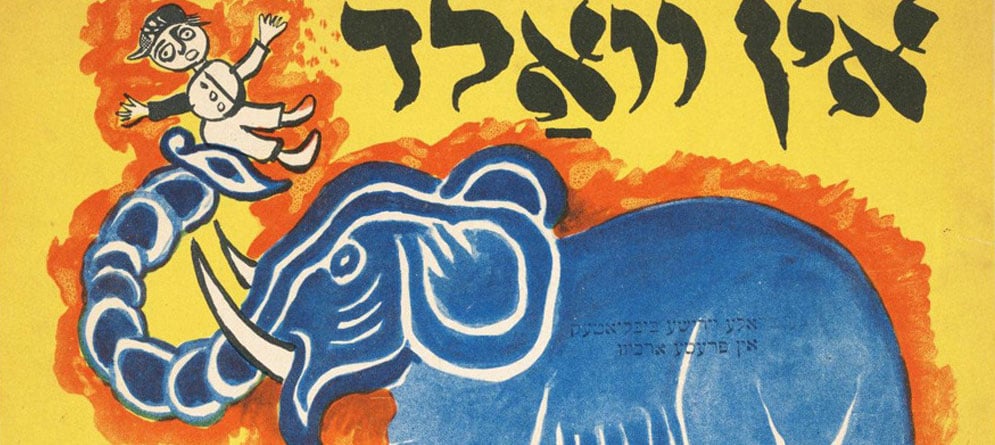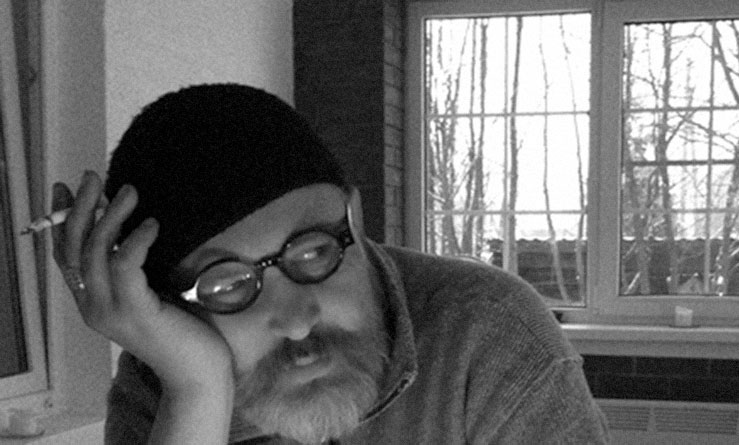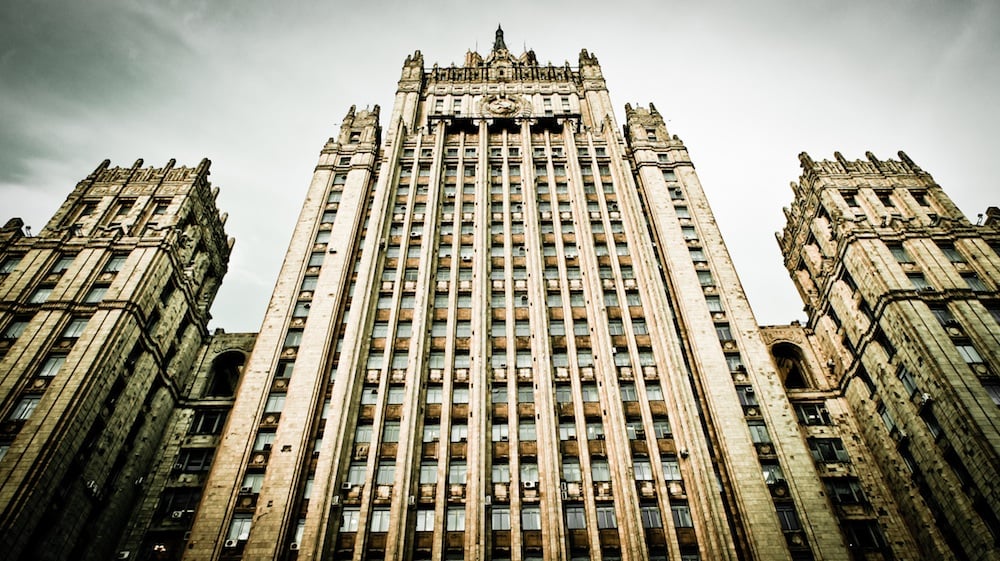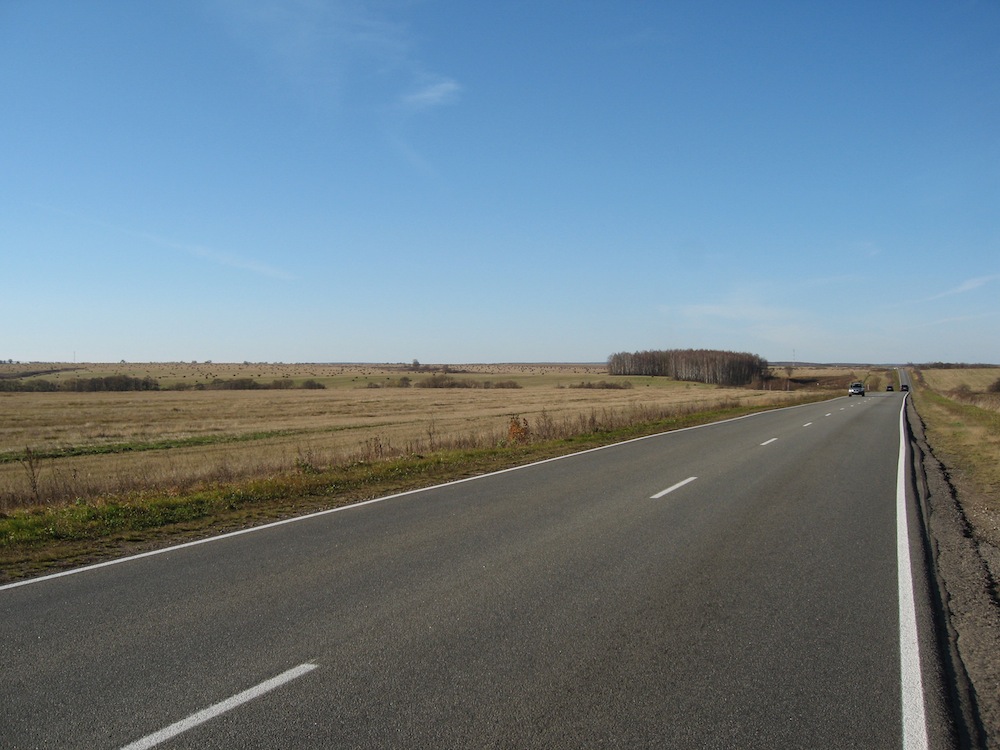Other voices: Owen Hatherley on a lost generation of Yiddish writers

A new collection of translations shines a light on Russia's rich history of Yiddish literature and, argues Owen Hatherley, serves an important reminder of the country's often marginalised multicultural heritage
Current events must make the recent opening of a Museum of Tolerance in Moscow look like a bad joke. The museum in fact concentrates on a quite specific area of “tolerance” — the experience of Russian Jews. As ever, the word “tolerance” suggests a certain guilty conscience. Historically, Russia’s Jews were perhaps the most visible minority in a territory which has always been a multiplicity of different groups, languages and peoples, entirely inadequately subsumed under the term “Russian”. Even after the break-up of the USSR, the Russian Federation still includes many autonomous republics and national territories inherited from the old Russian Federated Soviet Republic. A new book, From Revolution to Repression: Soviet Yiddish Writing, 1917-52 (Five Leaves Press), edited by the late Yiddishist Joseph Sherman, is a reminder of the distinctive culture that arose in this space — and a reminder of why some would prefer to forget it.
The Soviet Union might have been identified with Russia, but as its name, which refuses to denote any national territory or culture, indicates, it was intended to be something else. Its early nationalities policy was at times bafflingly complex. (It has been analysed most fully in Terry Martin’s The Affirmative Action Empire.) The Bolsheviks favoured “national self-determination”, which in practice entailed the rejection of Russian dominance, proposing instead a federation of diverse peoples and languages. However, the caveat — one whose legacy is still highly contentious — was that each “nation”, and its language, was tied to a territory. Jews were the one large group that did not get their own autonomous republic (although, later, the far eastern territory of Birobidzhan was designated as one, to a general lack of interest from the mainly urban population), but were still recognised as a “nation”, with national rights and a national language — Yiddish.

A Yiddish primer from the autonomous Jewish republic of Birobidzhan (1954)
With the demise of Yiddish, due both to the Holocaust and the state of Israel’s preference for Hebrew, the poets, novelists and critics who wrote in this language have become obscure. Sherman’s anthology restores their importance. Yet the material in this book will be familiar to readers of those Russian Jewish writers who wrote in Russian, especially Isaac Babel and Vasily Grossman. The pivotal experiences are the same: revolution, a civil war accompanied by the ferocious pogroms of the White Armies, the “building of socialism”, Stalinism and the Holocaust. But the focus is different: we see a deeply local and specific commitment to internationalism and modernism, claiming both on their own terms, not as impositions from outside.
The poetry resembles German Expressionism in its intensity and angularity, appropriate to the often horrific subject matter. Leyb Kvitko’s 1923 cycle of poems 1919, for instance, about the pogroms of the Russian Civil War, are expressions of horror and helplessness from the perspective of the massacred in the shtetl: “We are small, very small / Terror drags us to the ground / A kin to its own dust” (Day and Night).
Yet the apocalyptic aspect of the poetry chimes with a belief in revolution; in the same cycle is the poem To Us, the Last Ones:
Perhaps it’s something else
Something quite different that’s been promised us
And this is just the trial.
The trial by sword and by catastrophe.
The same pogroms are the subject of another cycle included here, David Hofshteyn’s Grief, published in Kiev in 1922. Here, the poems were created in collaboration with Marc Chagall, who arranged them in spirals, or wrote them into line drawings of the experiences described, in a way at once illustrative and fantastical, devoid of the sentimental tinge that crept into the painter’s later work. The book tries to reproduce this in English, and reprints Chagall’s originals by way of comparison.
Like El Lissitzky’s contemporary illustrations to Yiddish books, Grief suggests a fusion of modernism and local tradition — but in some of these writers, that tradition is shown to be dying out, both under the attack of the White Armies and, later, as a result of the conscious action of young Communist Jews — the poet Izi Kharik even wrote, both guiltily and triumphantly, of how he “set the shtetl ablaze”. In the longest and most directly Communist of these pieces, Peretz Markish’s The Workers’ Club (1926), the post-Civil War administration of one shtetl tries to convince the uncertain population to allow the conversion of an under-attended Synagogue into a Workers’ Club (something that was then common with churches). There’s again a vivid, Expressionistic aspect to the writing, a radical transfiguration and personalisation of place. Markish writes of how, in the synagogue, “the panes of the aristocratic Venetian glass windows glimmered a little more sadly than usual in the setting sun. Today they more closely resembled inflamed eyelids over the eyes of a sick old man or the lenses of tinted spectacles that turned the world green, red and multicoloured”.

Marc Chagall’s illustrations for David Hofshteyn’s Grief (1922)
Eventually the commissars convince the local craftsmen to support the conversion by appealing to them as labourers, people capable of making beautiful things with their hands: the synagogue’s eastern wall would be preserved, becoming “a place for books and newspapers. Workers’ newspapers. Because it’s a workers’ ark”. This exemplifies something common in this writing — the attempt to fuse the “national” inheritance with socialism, not in a Stalinist way by creating a “Soviet” nationalism (“national in form, socialist in content”), but by appealing to people as workers, as creators and producers.
“Der Nister combines incantatory storytelling style with a stark simplicity”
Most of these writers were committed communists and spent much of the Thirties churning out hymns to Stalin, which are not included here. Some of those who would not or could not write to order became children’s writers, foremost among them Der Nister (the pen name of Pinkhes Kahanovitsh). His children’s tales included here are as avant-garde as they are traditional, just-so-stories that spiral off into bizarre transformations, with intricate, puzzle-like structures and riddles. His turn to realistic fiction under the influence of the Holocaust results in the most shocking and moving piece in the book, based on real events. In the story Father and Son (1943), Der Nister combines the incantatory storytelling style he had developed with a stark simplicity. Set in Poland and based on real events, it initially describes a father (a rabbi) and his son (a Communist), in all their disagreement. After their town is occupied by the Nazis, the Gestapo leader (sketched out with disturbing intimacy by Der Nister, who had lived in Hamburg) demands that the son spit on a Torah scroll and the father spit on a picture of Lenin. Both refuse, and are executed. Hostile in life, they are brought together in death, considered to be representatives of the same mythical Judeo-Bolshevism.
Where to go after this? The latest of these stories, David Bergelson’s eerie, if eventually optimistic The Sculptor (1947) imagines two Jewish partisans returning to rebuild their deserted village, emptied by the Holocaust. Yet the book’s introduction tells the real story of what happened after the war, describing the fate of the wartime Jewish Anti-Fascist Committee, to which almost all of the writers in the book belonged, and which was massacred en bloc in Stalin’s last, anti-Semitic purge. Sherman argues this was due to a brutal, paranoid raison d’état, spurred both by the welcome granted by Muscovites to a state visit by Golda Meir, and the JAFC’s contacts with Americans — any loyalties other than to the Russian state were inherently criminal. Enormous Russian chauvinism crushed these writers, just as their dream of a local modernism and a non-homogenising internationalism had already been crushed politically. But their vivid, original, revolutionary writing can still serve as an argument for a multiculturalism that goes beyond “tolerance”.


